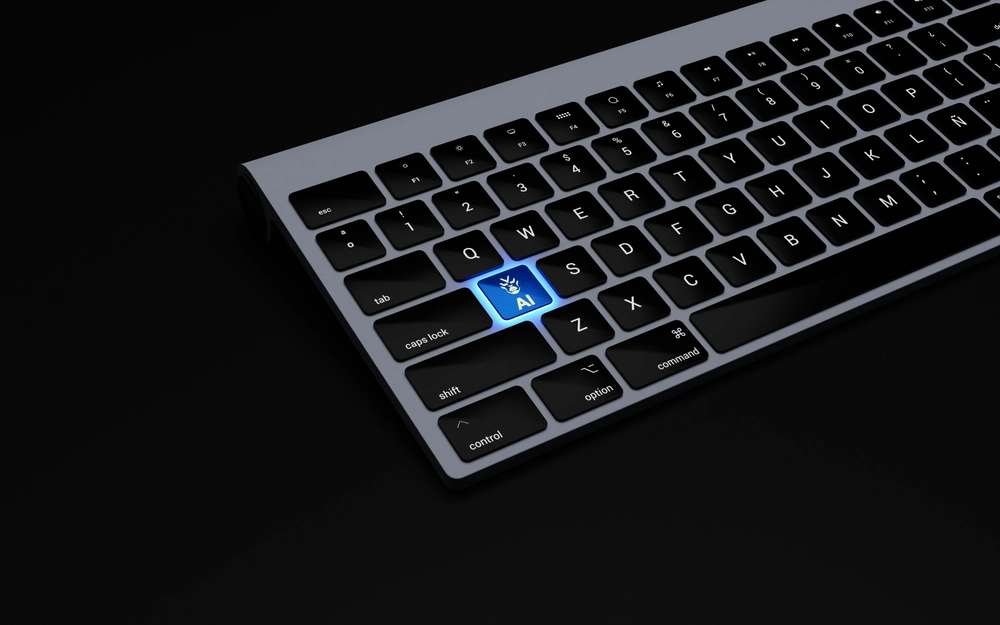In the fast-paced world of digital marketing, staying ahead can be a challenge. Enter Google Ads’ new AI controls—a real game-changer for boosting ROI. These tools go beyond flashy features, giving you smarter insights and automating the tedious stuff, so you can focus on what matters most: growing your business.
Imagine running an online boutique and finally reaching the right customers, not just casting ads into the void. With Google’s AI, you’re targeting people who’ve checked out similar sites, loved the same styles, or engaged with your social media. In this guide, we’ll explore how to use these new AI features, from refined targeting to smart bidding, so you can make the most of your ad budget and elevate your marketing game.
Overview of New AI Controls
Google Ads has rolled out an exciting suite of advanced AI controls that fundamentally transform how marketers approach their advertising campaigns. At the heart of these features is a focus on enhanced targeting capabilities and intelligent automation, empowering advertisers to harness user data at scale for more effective audience engagement.
One of the standout tools is Performance Max, a feature that leverages machine learning to optimize your ad campaigns across all Google channels, including Search, Display, YouTube, and more. What sets Performance Max apart is its ability to analyze vast amounts of data in real-time, helping you reach your target audience wherever they are online. For instance, if you own a coffee shop, Performance Max can identify potential customers by analyzing behaviors such as recent online searches for local coffee spots or social media interactions with similar businesses. This means you’re not just throwing ads into the digital void; you’re engaging with people who are already interested in what you offer.
In addition to smarter targeting, the new automated bidding options are a game-changer. These features utilize AI to adjust your bids in real-time based on a variety of performance indicators. Imagine running an ad campaign for a seasonal sale. If your data reveals that certain times of the day consistently yield more clicks and conversions, the AI can automatically increase your bids during those peak hours. This not only optimizes your ad spend but also helps you stay competitive in an ever-changing marketplace without the need for constant manual adjustments.
Moreover, these AI controls provide insightful analytics that help you understand the performance of your campaigns better. With detailed reports and data-driven recommendations, you can continuously refine your strategies and ensure that your marketing efforts align with your business goals. This level of insight and automation allows you to focus on creative aspects and innovative strategies, leaving the heavy lifting of data analysis and bidding adjustments to Google’s intelligent systems.
Leveraging AI Controls for Success

To really tap into the potential of Google Ads’ new AI controls, it’s all about smart targeting, automation, and customization. Let’s kick things off with targeting enhancements. Dive into audience insights to find segments that click with your brand. For example, if you’re selling fitness gear, you can create custom audiences based on folks who often search for workout tips or engage with fitness content. This way, when you launch your ads, they’re hitting the screens of people who are genuinely interested in fitness. By tailoring your messages and visuals to these specific groups, you not only boost your chances of getting noticed but also make your campaigns way more effective.
Now, let’s talk about automated bidding strategies. Google Ads has some great options, like “Maximize Conversions” and “Target CPA,” which let the AI handle the bidding for you. Picture this: you’re promoting a new app for learning languages. By setting your campaign to “Maximize Conversions,” the AI will automatically tweak your bids to help you score the most downloads. It adjusts in real-time based on what’s working—like which times of day get the most clicks. This means you can focus on creating awesome ad content and keeping an eye on performance metrics, rather than stressing about adjusting bids all the time.
Another cool AI feature is ad customization, which allows you to create dynamic ads that change based on the viewer’s interests. For instance, if someone has been searching for hiking gear, your ads can automatically showcase products like the latest hiking boots or cool backpacks tailored to their interests. This kind of personalization not only grabs attention but also makes potential customers feel like your ads were made just for them, which is pretty powerful.
Case Study Example
Let’s explore a practical example that highlights the effectiveness of Google Ads’ new AI controls. Imagine a mid-sized e-commerce company that specializes in eco-friendly home products. Despite having a steady stream of visitors to their website, they struggled with low conversion rates. Their products were well-received, but their ads weren’t connecting with potential buyers.
To address this issue, the marketing team decided to utilize Google Ads’ advanced AI targeting features. They began by refining their audience segmentation to focus on users who had visited their site but hadn’t completed a purchase. This included individuals who had browsed specific product categories, such as reusable kitchenware and sustainable cleaning supplies.
Next, the team implemented automated bidding strategies, specifically choosing the “Maximize Conversions” option. They set their campaign to target users who had shown interest by visiting product pages but left without making a purchase. The AI worked its magic, adjusting bids in real-time based on user behavior and engagement patterns, which allowed the company to focus its budget on the most promising leads.
As a result of these strategic changes, the company saw significant improvements over the following months. They achieved a 35% increase in conversion rates and a 25% reduction in cost per acquisition (CPA). By effectively utilizing AI controls, the marketing team transformed their initial underperforming campaign into a powerful marketing strategy that resonated with their target audience.
Moreover, the data gathered during this period provided valuable insights into customer preferences. The team discovered which eco-friendly products were most appealing to their visitors, enabling them to adjust their inventory and create targeted promotions that aligned with customer interests.
This case study illustrates how leveraging AI controls in Google Ads can lead to real, measurable success. By refining audience targeting and employing automated bidding strategies, businesses can significantly enhance their advertising effectiveness, driving more conversions while optimizing their budget.
Step-by-Step Optimization Guide
To optimize your Google Ads campaigns using the new AI controls, follow these straightforward steps:
1. Define Campaign Goals
Before diving into the tools, it’s crucial to clearly define what you aim to achieve with your campaign. Setting specific goals not only gives your strategy direction but also helps you measure success later on. Are you looking to increase website traffic, generate quality leads, or boost sales? Each goal will require a different approach and different metrics to track.
For instance, if your primary goal is to boost newsletter sign-ups, you want to ensure that this objective is crystal clear from the outset. This means not just saying “I want more sign-ups” but figuring out exactly how many you want and by when. Perhaps you decide you want to increase sign-ups by 20% over the next month. With this specific target in mind, you can create campaigns that emphasize your newsletter’s value, like exclusive content or special promotions, helping to attract the right audience.
2. Utilize Audience Insights
Once your goals are set, it’s time to dig into the data available in the Audience Manager section of Google Ads. Here, you can explore a treasure trove of insights that reveal who your audience is and how they interact with your brand. Look for high-performing audience segments, which will help you refine your targeting and ensure your ads reach the right people.
For example, consider users who clicked on your ads but didn’t convert. These are valuable insights! By creating custom audiences based on previous interactions and behaviors, you can tailor your messaging to re-engage these potential customers. Maybe you can design ads that address any hesitations they might have had or highlight new benefits of your offerings that could sway them to take action. Understanding your audience’s journey helps you craft campaigns that resonate on a deeper level.
3. Set Up Automated Bidding
Next, you’ll want to set up your bidding strategy, and Google Ads offers some great automated options to help you align with your objectives. If your primary goal is to increase conversions, for instance, selecting “Maximize Conversions” is a smart move. This option allows Google’s AI to analyze data and make real-time bid adjustments, ensuring you’re making the most of your budget.
But let’s say your focus is on maximizing revenue instead. In that case, you might opt for “Target ROAS” (Return on Ad Spend). This strategy works by setting a target return and adjusting bids accordingly, so you can focus not just on getting clicks, but on generating revenue that aligns with your business goals. Think about what you’re aiming for with your ads, and choose the strategy that will best support that vision.
4. Craft Compelling Ad Copy
Now that you’ve got your goals and bidding strategies set, it’s time to create engaging ad content that truly resonates with your targeted audience. Compelling ad copy can make all the difference in capturing attention and driving action. Start by brainstorming key messages that highlight your unique selling points—what makes your products or services stand out?
A/B testing is an invaluable tool here. Try out different headlines, descriptions, and calls to action to see what works best. For example, you might test one ad featuring a limited-time discount against another that highlights free shipping. This experimentation allows the AI to gather data on which combinations yield the best results, giving you insights into what your audience responds to most effectively. The more tailored your ads are to your audience’s preferences, the better your engagement will be.
5. Monitor Performance and Adjust
After launching your campaign, it’s essential to closely monitor performance metrics. Use Google Ads’ reporting tools to evaluate how well your ads are aligning with your set goals. Are you getting the clicks you hoped for? Are users engaging with your content? This step is critical; it’s where the data truly becomes actionable.
Be ready to make data-driven adjustments as needed. If you notice certain demographics are responding better than others, consider reallocating your budget to focus more on that audience. For instance, if younger users are clicking through at a higher rate, you might want to adjust your targeting to reach even more of that demographic. The beauty of digital advertising is that it allows for quick pivots, so take advantage of it!
6. Leverage Insights for Future Campaigns
Finally, once your campaign wraps up, it’s time to analyze the insights you’ve gathered. Look for trends in audience behavior and ad performance that can inform your future strategies. What worked well? What could be improved? This reflective process is essential for ongoing success.
For example, if you discover that video ads drive significantly higher engagement than static images, consider increasing your investment in video content moving forward. Or, if you find that specific messaging resonated more with your audience, use that as a foundation for your next campaign. By continuously learning from past efforts and applying those insights, you can create even more effective advertising strategies in the future.
Best Practices and Tips
When navigating Google Ads’ new AI controls, consider these best practices to get the most out of your campaigns. First, embrace a mindset of experimentation. The real power of AI lies in its ability to analyze data rapidly, allowing you to test various targeting strategies and bidding options. For example, if you sell fitness products, you might initially target a broad audience interested in health. However, after monitoring performance, you could refine your approach to focus on users specifically looking for workout equipment. Regularly reviewing your audience segments and ad content will help you stay aligned with changing customer interests.
Second, keep an eye on your automated bidding performance. While the AI can make smart adjustments, it’s crucial to monitor your campaign’s key performance indicators (KPIs). Regularly check metrics like cost per acquisition (CPA) and return on ad spend (ROAS) to see if your automated strategies are hitting your goals. For instance, if you’re using a bidding strategy like “Maximize Conversions” but notice that your CPA is increasing without a boost in sales, it might be time to switch to another strategy, such as “Target CPA.”Lastly, avoid common pitfalls, such as over-relying on automation without human oversight. While Google Ads’ AI controls are powerful, your strategic input is essential for achieving the best results. Regularly review your campaigns based on performance data and adjust as needed. Remember, effective advertising is an ongoing process. For example, if you discover that certain ad copies resonate better with your audience, make sure to incorporate those insights into future campaigns. Staying engaged with your campaigns ensures you can adapt to new trends and optimize for better performance.
Key Takeaway
Google Ads’ new AI controls are a game-changer for marketers looking to ramp up their ROI with smarter campaign management. With better targeting options and advanced automation features, you can streamline your efforts and really connect with your audience. These tools help make your campaigns more efficient and ensure they align with your overall business goals.
As you dive into these AI features, keep in mind that the key to success is all about strategic implementation and ongoing optimization. By using enhanced targeting, automated bidding, and data-driven insights, you can take your advertising strategies up a notch and achieve some impressive results. For example, fine-tuning your audience segments can lead to more meaningful interactions, while automated bidding helps you get the most out of your ad budget.
Now’s the time to embrace these innovations and see how they can transform your marketing efforts into a powerful growth engine. The advertising world is changing, and with these AI tools at your fingertips, you’re ready to tackle it like a pro. If you want to level up your campaigns, check out our Google Ads/PPC advertising services to see how we can help you make the most of these powerful features!


